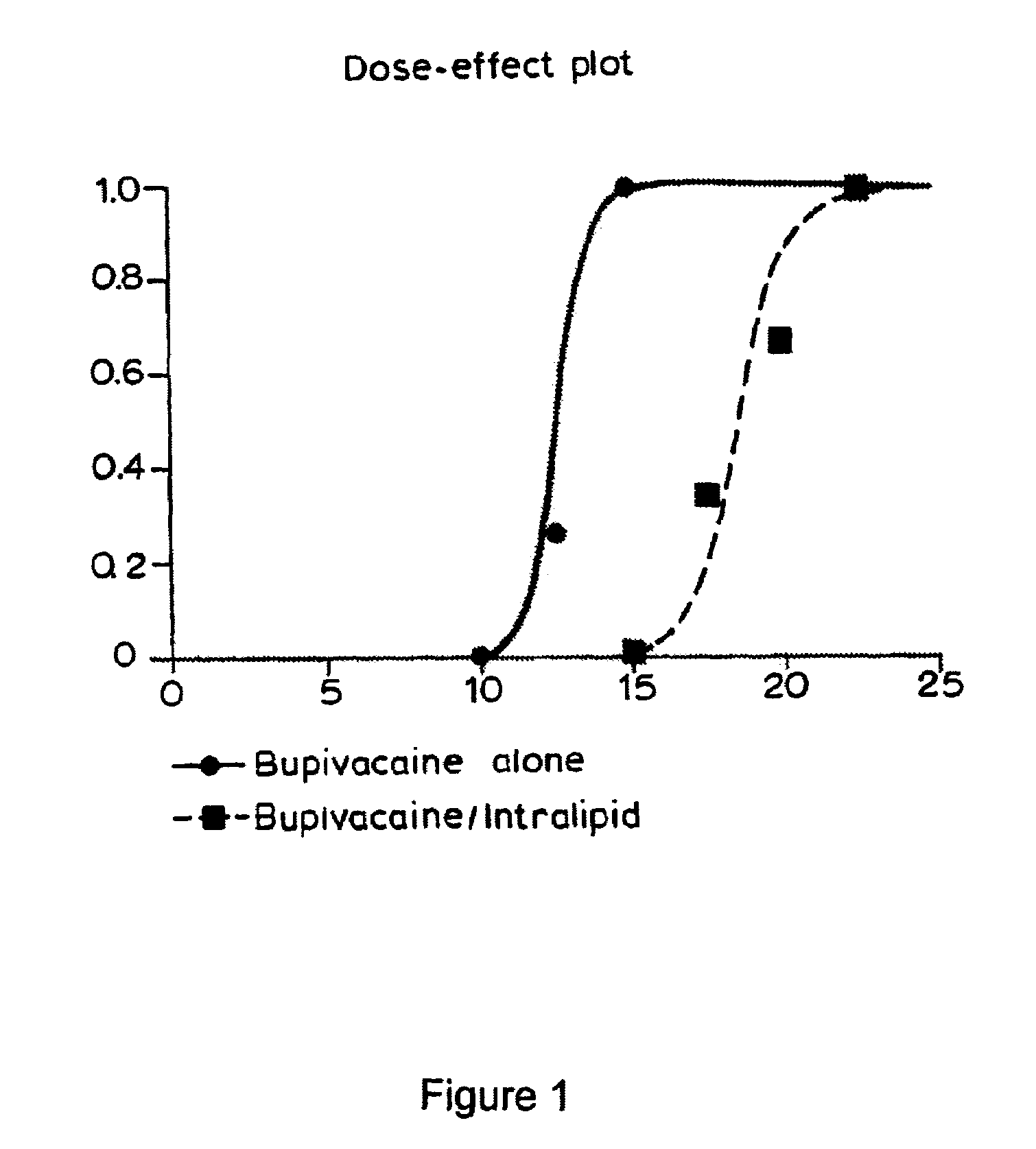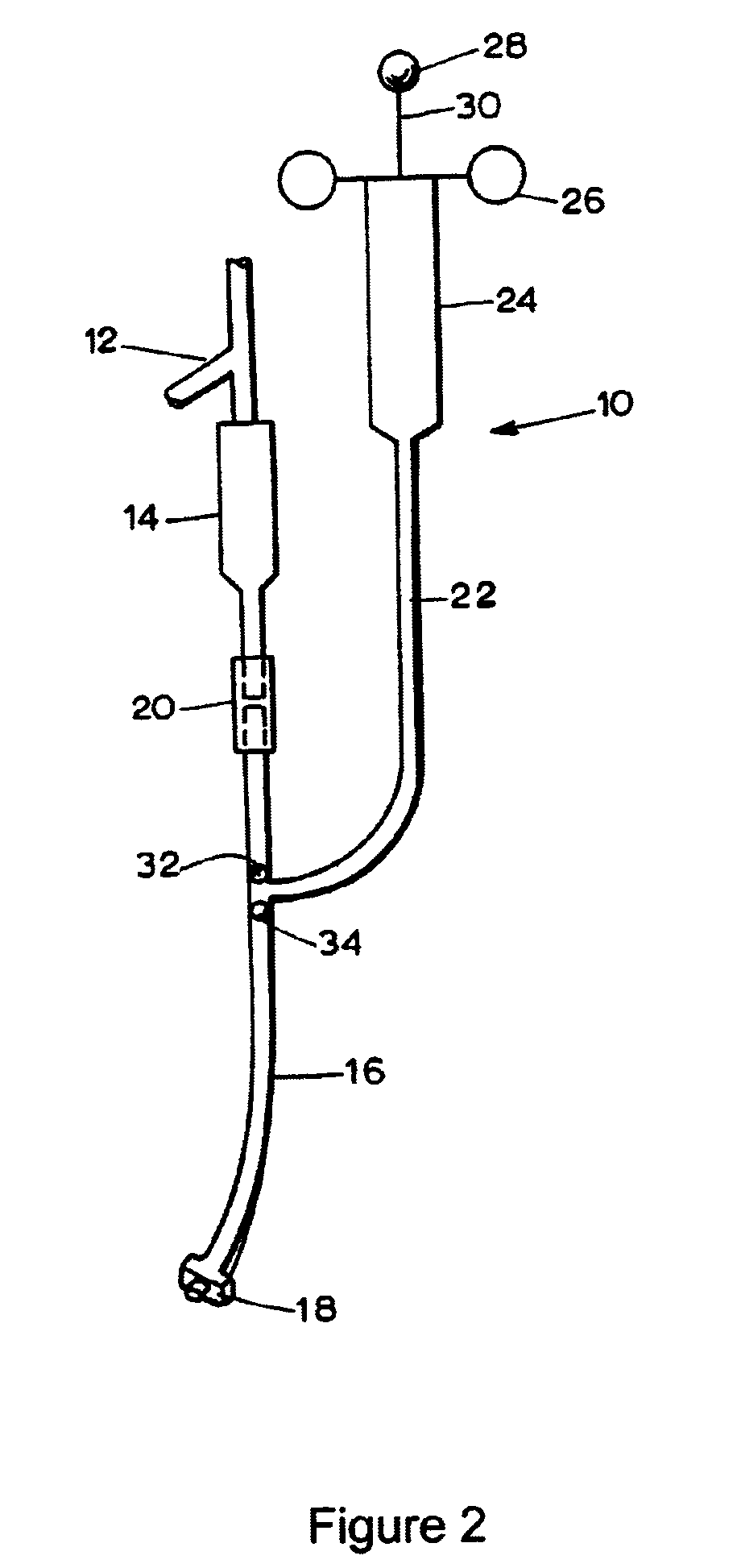Lipid emulsions in the treatment of systemic poisoning
a technology of lipid emulsion and systemic poisoning, which is applied in the direction of emulsion delivery, medical preparations, pharmaceutical non-active ingredients, etc., can solve the problems that the liposome is not readily permeable to extraneous toxic, and achieve the reduction of the bioavailability and toxicity of poisonous agents, wide application range, and wide applicability to the treatment of toxic substances
- Summary
- Abstract
- Description
- Claims
- Application Information
AI Technical Summary
Benefits of technology
Problems solved by technology
Method used
Image
Examples
example 1
Pretreatment with a Lipid Emulsion Composition Shifts the Dose-Response to Bupivacaine Induced Asystole in Rats
[0030]Studies were undertaken to assess the ability of a lipid emulsion to shift the dose-response to drug-induced asystole (heart stoppage) in rats. Pretreatment with a lipid emulsion increased the dose of bupivacaine (a local anaesthetic) required to induce asystole. Racemic bupivacaine hydrochloride was purchased from Sigma (St. Louis, Mo.) while tritiated bupivacaine was purchased from Moravek Biochemicals (Brea, Calif.). Intralipid® was purchased from Baxter Healthcare (Deerfield, Ill.). Male Sprague-Dawley rats weighing between about 250 grams to about 370 grams were used in all experiments.
[0031]Animals were first anesthetized in a bell jar with isoflurane to allow intubation, then mechanically ventilated with about 1.75% isoflurane in about 100% oxygen using a Harvard rodent ventilatory model 680 in conjunction with a tidal volume of 3 ml and a starting rate of abou...
example 2
Resuscitation from a Toxic Dose of Bupivacaine with a Lipid Emulsion Composition
[0041]Experiments were performed to evaluate the ability of a lipid emulsion to resuscitate an animal from a toxic dose of bupivacaine. All animals were anaesthetized, instrumented and stabilized at about 1.75% isoflurane as described in Experiment 1, and arterial blood pressure and ECG were continuously monitored. Each rat received an intravenous dose of bupivacaine (see below for doses) for more than about 10 seconds by Harvard infusion pump, via the iliac catheter. Immediately after the bupivacaine dose, isoflurane was stopped and mechanical ventilation was continued with about 100% oxygen, with all animals receiving an infusion of either saline or about 30% by wt. solution of Intralipid® via the internal jugular catheter. In each case, the initial infusion rate was about 7.5 ml / kg bolus over 30 seconds, followed by a steady-state rate of about 3 ml / kg / min for about 2 minutes. Chest compressions were ...
example 3
Emulsion Delivery Device
[0045]A delivery device 10 constructed in accordance with the teachings of the invention is illustrated in FIG. 2. As shown in that figure, the delivery device 10 includes a vented spike 12 for insertion into an intralipid (lipid emulsion)-containing bottle or other suitable container (not shown) suspended from an IV pole in a conventional manner. The vented spike 12 is in communication with a drip chamber 14 which is, in turn, in communication with a main delivery channel implemented by a length of tubing 16 which preferably has a large bore. The bottom end of the tubing 16 is provided with a connecting means, which preferably is a conventional luer lock 18.
[0046]To control the flow of fluid from the drip chamber 14, the delivery device 10 is provided with a conventional roller clamp 20 but other means for regulating fluid flow are also contemplated. The roller clamp 20 operatively engages the outer surface of the tubing 16 immediately below the drip chamber...
PUM
 Login to View More
Login to View More Abstract
Description
Claims
Application Information
 Login to View More
Login to View More - R&D
- Intellectual Property
- Life Sciences
- Materials
- Tech Scout
- Unparalleled Data Quality
- Higher Quality Content
- 60% Fewer Hallucinations
Browse by: Latest US Patents, China's latest patents, Technical Efficacy Thesaurus, Application Domain, Technology Topic, Popular Technical Reports.
© 2025 PatSnap. All rights reserved.Legal|Privacy policy|Modern Slavery Act Transparency Statement|Sitemap|About US| Contact US: help@patsnap.com



